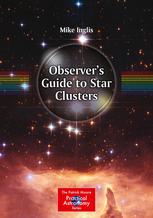

Most ebook files are in PDF format, so you can easily read them using various software such as Foxit Reader or directly on the Google Chrome browser.
Some ebook files are released by publishers in other formats such as .awz, .mobi, .epub, .fb2, etc. You may need to install specific software to read these formats on mobile/PC, such as Calibre.
Please read the tutorial at this link: https://ebookbell.com/faq
We offer FREE conversion to the popular formats you request; however, this may take some time. Therefore, right after payment, please email us, and we will try to provide the service as quickly as possible.
For some exceptional file formats or broken links (if any), please refrain from opening any disputes. Instead, email us first, and we will try to assist within a maximum of 6 hours.
EbookBell Team

4.4
12 reviewsAmateur astronomers of all expertise from beginner to experienced will find this a thorough star cluster atlas perfect for easy use at the telescope or through binoculars. It enables practical observers to locate the approximate positions of objects in the sky, organized by constellation. This book was specifically designed as an atlas and written for easy use in field conditions. The maps are in black-and-white so that they can be read by the light of a red LED observer’s reading light. The clusters and their names/numbers are printed in bold black, against a “grayed-out” background of stars and constellation figures.
To be used as a self-contained reference, the book provides the reader with detailed and up-to-date coverage of objects visible with small-, medium-, and large-aperture telescopes, and is equally useful for simple and computer-controlled telescopes. In practice, GO-TO telescopes can usually locate clusters accurately enough to be seen in a low-magnification eyepiece, but this of course first requires that the observer knows what is visible in the sky at a given time and from a given location, so as to input a locatable object. This is where "The Observer's Guide to Star Clusters" steps in as an essential aid to finding star clusters to observe and an essential piece of equipment for all amateur astronomers.